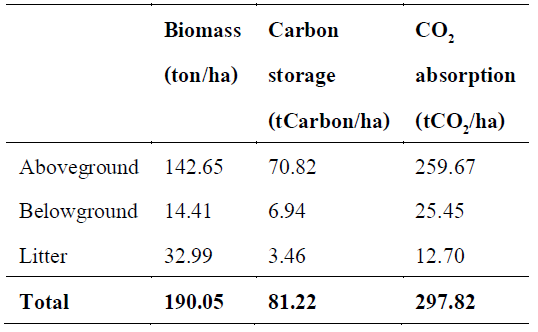Dynamics of Plant Community and Carbon Storage in Pine Deciduous Dipterocarp Forest in Queen Sirikit Botanic Garden, Chiang Mai Province, Thailand
Keywords:
biomass, litter fall, increment rate, ingrowth rate, mortality rateAbstract
Queen Sirikit Botanic Garden is situated in Chiang Mai Province, Thailand, abundant with tropical plant communities. This study aims to monitor the structure of plant community and the carbon storage in the biomass of Pine-Deciduous Dipterocarp forest (1,040 m. a.s.l.) in the botanic garden. A 100 x 100 m2 permanent plot was established and monitored in 2012 and 2017. The height of plant which had perimeters greater than 14 cm, were measured. After five years of observations, in 2017, an additional species was found, the tree density increased from 398 to 423, the total stem basal area increased from 22.35 to 23.87 and the Shannon-Wiener index increased from 3.06 to 3.08 The average increment rate, ingrowth rate and mortality rate were 5.75 % (1.15 % per year), 9.80 % and 3.52 %, respectively. Total carbon storage in the forest in 2017 was 77.76 ton C/ha which most of them were kept in plant biomass. Additionally, only 3.46 ton carbon was kept in litter fall. The carbon storage was increased from 68.61 ton C/ha in 2010. The increase rate of carbon storage is lower than expected due to the disturbance of forest fires and human activities.
Downloads



.png)





